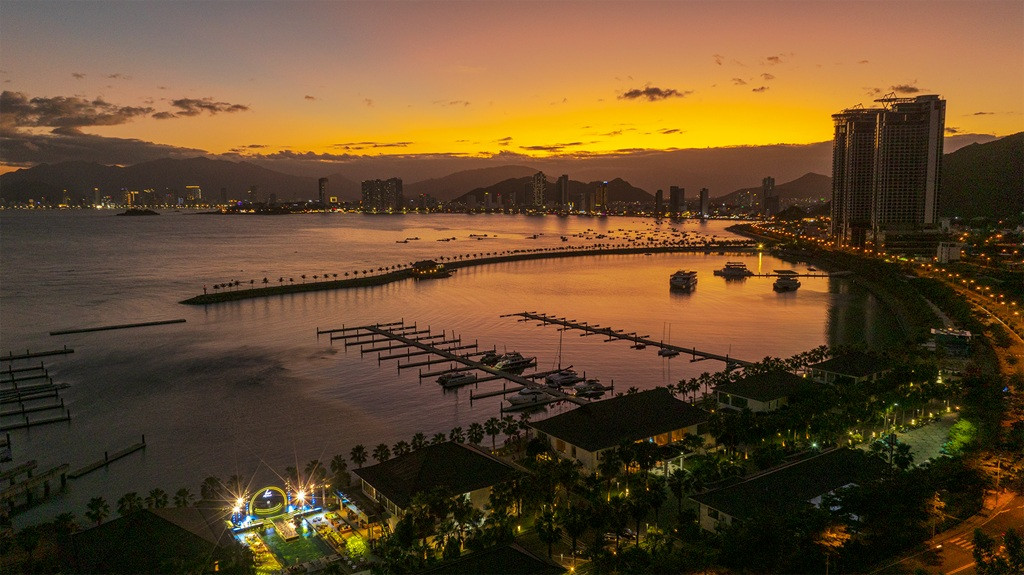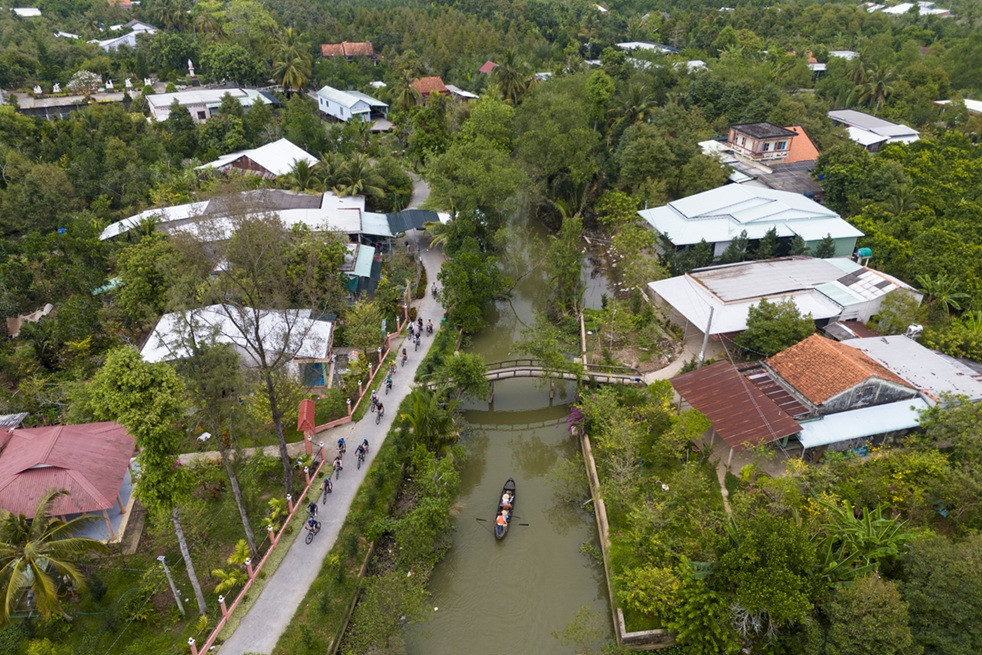VietnamNet would like to introduce a special series by tourism expert Doan Huu Duc, focusing on the development of Vietnam’s river-to-sea tourism. Through in-depth analysis and firsthand insights, the series explores how Vietnam can unlock the full potential of its inland waterways and vast coastline.
From the pioneering efforts of private enterprises like Focus Travel to the strategic significance of regional governance reforms, the series offers a comprehensive vision for transforming the Mekong Delta into a world-class tourism hub.
This is a timely and vital roadmap for integrating river and sea tourism into Vietnam’s broader economic and cultural future.
Vietnam’s river-sea tourism: A shared vision or missed opportunity?

Ana Marina Nha Trang, Vietnam's first international-standard marine port, took over 15 years to complete but stands as a symbol of private-sector persistence and tourism potential.
Standing at Ana Marina Nha Trang - Vietnam's first international-standard marine port - it becomes clear how private-sector persistence and long-term vision can transform the country’s tourism landscape.
The fact that it took over 15 years to develop is both a testament to determination and a reminder of how red tape can stall local progress.
This success raises a deeper question: can Vietnam take the same momentum inland and unlock the full potential of its river systems to build a truly integrated river-to-sea tourism ecosystem?
The timing couldn’t be more critical.
In September 2023, Thua Thien Hue Province hosted a conference to review Vietnam’s international cruise tourism performance from 2018 to 2023. The findings were sobering. Poor seaport infrastructure, limited marine tourism offerings, and rigid policies are still holding back progress. Although plans are in place to upgrade Chan May Port and build new cruise terminals, implementation remains slow.
Yet Vietnam continues to position itself as a rising cruise tourism hub in the region. With 3,260 kilometers of coastline and a wealth of natural diversity, the country holds a unique comparative edge. Major international cruise lines like Pandaw, Emerald Cruises, and Avalon Waterways have already included Vietnam on their itineraries. Ports in Da Nang, Ha Long, Nha Trang, and Ho Chi Minh City are welcoming thousands of visitors. But behind the scenes, critical gaps remain - especially in infrastructure, onshore services, and specialized cruise terminals.
What sets Vietnam apart is something few countries in Asia can offer: a seamless waterway experience - from canals and rivers to the open sea - all in a single journey.
The Mekong Delta, in particular, is a gem of interwoven waterways, floating markets, cultural richness, and biodiversity. But to fully realize its promise, we need more than visionary entrepreneurs. We need governance reform at the highest level, infrastructure that connects, and strong inter-provincial coordination.
Vietnam’s ongoing administrative reform could provide exactly that. In a landmark decision, the government is planning to reduce the number of provincial-level units from 63 to 34, decentralize authority, and streamline local governance.
In the Mekong Delta, this would mean going from 13 provinces and one city to just five larger, more manageable regions. It’s a bold move that may bring short-term challenges - but also a long-term solution to the chronic fragmentation that has held back regional tourism.
This restructuring unlocks new opportunities. Can Tho City, for example, will incorporate Soc Trang and Hau Giang, forming a river-sea corridor with 72 kilometers of coastline and strategic access to the Hau River and Xang Xa No Canal.
Greater Vinh Long will expand to include Tien Giang, Ben Tre, and Tra Vinh, adding 130 kilometers of untapped Pacific-facing coastline. These new administrative units can now promote themselves as unified destinations - designing longer itineraries that blend riverside heritage with coastal discovery.

To be fair, attempts at regional coordination are not new. Between 2003 and 2013, the German development agency GTZ led a 10-year initiative that trained thousands of public and private leaders across the Delta in local economic development.
That program helped establish the Mekong Delta Tourism Association and launched the region’s first integrated tourism website. Tours were grouped into four themed clusters: river-delta excursions, fruit garden and canal tours, submerged forest expeditions, and coastal-island circuits.
Still, even with those gains, every province continued to operate on its own. Competition over cooperation became the norm, making it difficult to attract meaningful investment or build a strong regional brand.
Some provinces even copied one another's tour programs - which, over time, made everything feel too similar in the eyes of visitors.
With the new mergers and simplified governance, we finally have a chance to change that. If done right, travelers will be able to experience each place for its unique story, not as just another stop on a short day tour.
We can also learn from our neighbors. Cambodia has built a successful river cruise sector, with companies like Victoria Mekong, Heritage Line, and AmaWaterways thriving under clear governance and coordinated planning. Vietnam has a much longer, more diverse river system - and with the right alignment, we can do even more.
To get there, Vietnam must go beyond building more ports and boats. The real challenge is connection - linking roads, airports, marine terminals, and rivers into a seamless journey. We also need to tell a single, compelling story about the Mekong - not 13 competing ones - so that international visitors understand the richness of the region as a whole.
Let’s also be realistic: private investors will only come when the rules are clear, the process is efficient, and the vision is long-term. It’s not just about cruises - it's about hotels, local logistics, food, crafts, community culture, and storytelling. That’s where real value is created, and where local people can benefit the most.
Right now, the Mekong Delta is standing on the edge of something big. If Vietnam wants to lead in river-sea tourism, we need more than infrastructure and ambition. We need working connections, investor-friendly policies, and a shared story that inspires travelers to dig deeper, stay longer, and come back for more.
The groundwork has already been laid - from the merging of provinces to the rise of river cruises and the decades of local training and effort. The question is no longer whether we can lead, but whether we are truly ready to align, act, and grow together.
The momentum is here. The vision is clear. Now is the time for coordinated action - before someone else defines the future of this shared river.
Doan Huu Duc